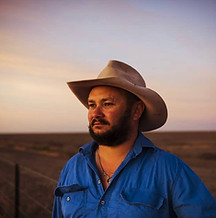
About Us

NARI NARI ELDERS Mabel Fitzpatrick (left) and Kerrie Parker, at Gayini © Annette Ruzicka
EXPLORING GAYINI - courtesy The Nature Conservancy Australia

Nari Nari Tribal Council (NNTC) was formed in 2000 by a group of Aboriginal people interested in the protection of both Indigenous culture and history, and the environment. The groups name is taken from the Aboriginal nation which originally inhabited the area, and who were documented by explorer Charles Sturt as being a peaceful and skilled group of sustainable hunters and fishers.
Nari Nari Tribal Council aims to become an example of culture and heritage protection and enhancement, environmental awareness and reconciliation, and sets itself to be a respected and revered organisation within both the Aboriginal and wider community. NNTC believes the works being undertaken are of regional, national and international significance.
NNTC plans to improve upon the resources that are held by the organisation, for the betterment of members of the community.
Nari Nari Tribal Council took control of Toogimbie, Glenhope / Lorenzo Stations in February 2000, after purchase by the Indigenous Land Corporation (ILC). Prior to this, since the introduction of farming in the Hay area in the late 1800s, both properties had been used exclusively for pastoral /agricultural purposes. Numerous Aboriginal burial and camp sites are recorded throughout our country and since taking ownership in 2000 these have been protected as part of the overall rehabilitation of our country. The Council operates as a not-for-profit indigenous organisation, incorporated under the Incorporation Act, and has adopted the Model Rules for incorporated bodies, with additional specific functions.
In 2013, as part of the implementation of the Murray-Darling Basin Plan, the New South Wales and Australian Governments purchased 19 separate properties and their water extraction rights in the Lower Murrumbidgee Valley. The conglomerated super property became known as Nimmie-Caira (now referred to as Gayini – the Nari Nari word for water).
In 2017, the NSW government called on interested parties to submit proposals for the ongoing management of Gayini, now without its former water extraction rights. Those rights were transferred to the Commonwealth Environmental Water Holder as part of water recovery targets set in the Murray-Darling Basin Plan.
In May 2018, a consortium led by The Nature Conservancy was announced as the successful proponent and took over management of Gayini. The other members of the consortium were the Nari Nari Tribal Council, the Murray Darling Wetlands Working Group and the Centre for Ecosystem Science at the University of NSW.
In late 2019, The Nature Conservancy facilitated the legal transfer of ownership of Gayini to the Nari Nari Tribal Council thanks to funding from the Indigenous Land and Sea Corporation and the Wyss Campaign for Nature.
The Nari Nari Tribal Council partners with organisations on a variety of projects, and as a not-for-profit organisation we restrict the use of project funding to activities that directly benefit restoration of the ecosystems, sustainable use and Indigenous connection to the project areas.
Please note: Grants may be called for from time to time, however funding is not permitted to be used for administrative overheads or fees not directly benefitting the project.
RAINBOW BEE-EATER at Gayini © Annette Ruzicka
Our Executive

Jamie Woods
Chairperson

Mark Brettschneider
Vice Chair

Tara Dixon
Sectretary / Treasurer


